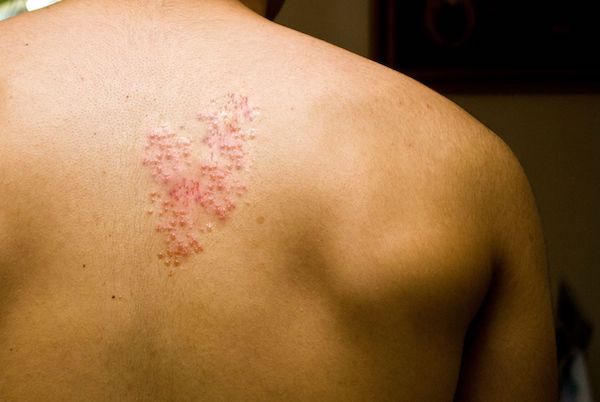Shingles is caused by a viral infection and causes a painful rash.

Shingles is a painful condition caused by the same virus that causes chickenpox, that is the varicella-zoster virus. It usually presents as a single stripe of blisters that wraps around the torso.
Shingles usually only affects people who are over 50, but anyone who has had chickenpox is at risk. Once you’ve had chickenpox, the varicella-zoster virus remains dormant or inactive in your body for a number of years. However, as you age, this virus can suddenly reappear and present as shingles.
If you come into direct contact with the blisters of the shingles rash, you could become infected by the virus if you’ve never had chickenpox. Once infected, you will develop chickenpox but not shingles. Shingles sufferers are contagious until their blisters scab over and should stay specifically away from newborns, pregnant women and those with a compromised immune system as chickenpox can be dangerous.
What are its symptoms?
Usually the virus affects only one side of the body, like a band wrapping around it, but sometimes the shingles rash occurs around one eye or on one side of the neck or face.
Shingles symptoms may also include:
- Very sensitive skin
- Itching
- Pain, burning, tingling or numbness of the skin
- A red rash that appears a few days after the rash
- Blisters filled with fluid that burst and later crust over.
Some people also experience:
If the pain of shingles is very intense it may be mistaken for other problems, and occasionally people get the pain without a rash. Therefore, it is important to get a proper diagnosis in order to treat it as soon as possible.
How is it diagnosed?
A doctor is usually able to identify shingles from the rash they see on either the left or right side of the body. It’s not usually necessary to do tests, however, if necessary, your doctor will test cells taken from a blister, or use the test for herpes.
What are your treatment options?
It’s critical to treat shingles because of the pain and discomfort shingles causes, and to prevent post-herpetic neuralgia (PHN), a complication of the disease, from setting in. Shingles treatments include treating pain and discomfort, and preventing the virus from multiplying.
Treat pain with paracetamol, paracetamol and codeine combinations or anti-inflammatories like ibuprofen. If none of these work for shingles pain, your doctor will prescribe something stronger.
Treat the discomfort in the following ways:
- Wear loose-fitting clothes made of cotton to reduce irritation of the painful or itchy area of skin
- Cool the affected area: wet dressings, a cool bath, apply ice cubes in a plastic bag to the area
- Protect the area: use a dressing that doesn’t stick to the rash to protect it when it has blistered and is raw
- Moisturise itchy skin with creams that have no perfumes or other additives.
Anti-viral medications prevent the shingles virus from multiplying, which may reduce the severity of symptoms of an episode of shingles, however, this type of medicine does not prevent post-herpetic neuralgia, from setting in. What is important is to start taking anti-viral medicine in the early stages of the attack, that is, within 72 hours of the appearance of the rash.
A doctor may also prescribe medications that treat nerve pain, such as antidepressants or anticonvulsants.
Can it be prevented?
The only real way to prevent someone getting shingles is for them to have had the vaccine for chickenpox. In South Africa, this vaccine is given as part of the South African vaccination schedule. However, the vaccine, if given in adulthood, may also reduce the effects of shingles and is therefore recommended for people of 60 and over.
What to do now
Immunisations are available at Clicks clinics, including for chickenpox. To make an appointment at a Clicks Clinic, call 0860 254 257 or visit Clicks Clinic online.
IMAGE CREDIT: 123rf.com
